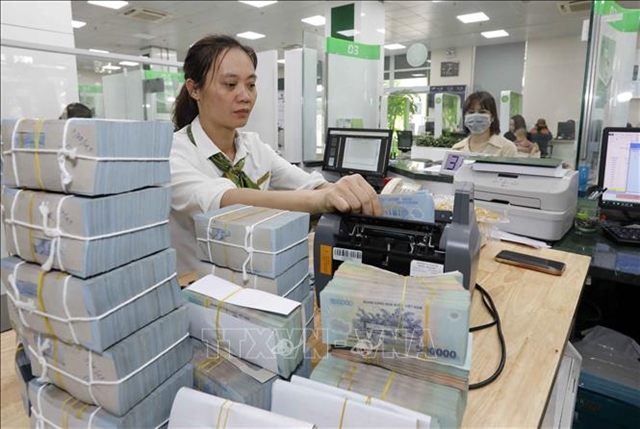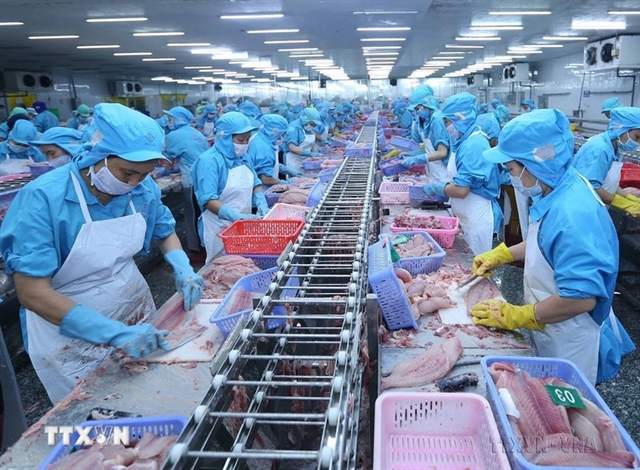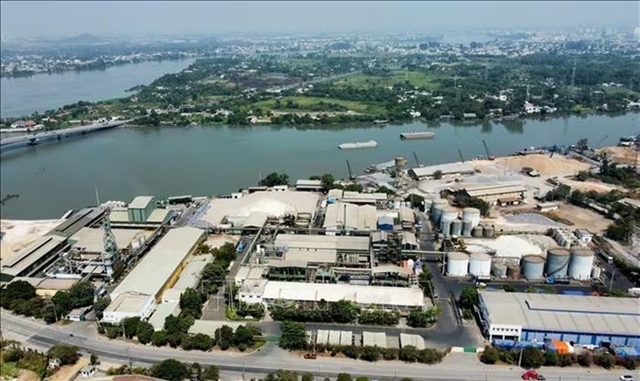 Economy
Economy

 |
| A bank worker at a Vietcombank office in Hoàn Kiếm District, Hà Nội. VNA/VNS Photo |
HÀ NỘI — In response to challenges faced by businesses, reducing interest rates should be considered to support long-term economic objectives. Lower lending rates help enterprises access capital and financial stability, according to economists and industry insiders.
This aligns with a recent Prime Minister’s directive, demanding that banks should balance their profits with wider responsibilities. Prime Minister Phạm Minh Chính has urged banks to cut costs, improve efficiency and forgo part of their profits to offer lower lending rates.
Economists said the approach helps ensure that businesses have access to affordable capital, which in turn supports job creation and economic recovery. Banks are expected to align their financial objectives with national priorities, sharing responsibility in the national building process.
To improve access to credit, many commercial banks have introduced special loan packages. For example, Agribank has launched programmes that reduce interest rates by 1.2–1.8 per cent per annum for large enterprises, import-export businesses, FDI firms and SMEs.
Short-term loans are offered at 2.4 per cent per annum, consistent with Agribank’s savings deposit rates for 3–11-month terms (2.5–3.5 per cent per annum). Similarly, Vietcombank has introduced special loans for individual borrowers, starting at 4.6 per cent per annum.
Currently, State-owned banks offer lending rates ranging from 1.2 per cent to 5.5 per cent per annum, with floating rates between 6.5 per cent and 7.7 per cent for 2–3-year terms—a reduction of 0.2–0.5 per cent compared to 2024. Private commercial banks offer first-year rates of 5–6.5 per cent per annum, with floating rates between 10.8 per cent and 20 per cent, a slight decline from last year.
While lending rates are decreasing, some banks have raised deposit rates to manage liquidity. For instance, BIDV—one of Việt Nam’s Big4 banks—raised its 36-month deposit rate by 0.1 per cent to 4.8 per cent per annum. Techcombank increased its rates for between one and eleven month deposits by 0.2 per cent. Eximbank and GPBank have raised long-term deposit rates for terms over 36 months to 6.6 per cent and 6.35 per cent per annum, respectively.
These changes reflect banks' efforts to balance lower lending rates with steady financial operations, ensuring stability while meeting Government directives to support businesses.
VIệt Nam's banking sector has reported strong profits, with institutions such as Vietcombank, BIDV, and VietinBank each exceeding VNĐ10 trillion in annual earnings. However, this performance must be considered alongside a challenging business environment.
In 2024, about 100,000 businesses temporarily suspended operations—a 12.4 per cent increase from the previous year. Over 76,000 businesses ceased operations pending dissolution (a 16.3 per cent rise), and nearly 22,000 completed dissolution procedures, up 20 per cent year-on-year.
Even with high bank earnings, the slow recovery of the business sector underscores the need for continued financial support. Balancing bank profitability with economic support is essential for sustained growth and stability.
Credit remains a central factor in economic recovery. The State Bank of Vietnam has set a 16 per cent credit growth target for 2025, in order to achieve an 8 per cent GDP growth rate.
Economist Đinh Trọng Thịnh said lower lending rates, combined with Government guidance, have led banks to reduce costs and pass savings on to borrowers. The gap between deposit and lending rates has narrowed to 1.5–3 per cent per annum and in some cases, loans are being offered at nearly the same rates as deposits.
However, concerns about financial sustainability persist. The appreciation of the USD and potential exchange rate fluctuations may pressure lending rates upward in the coming months. Banks will need to manage these challenges while continuing to support the economy. — VNS




